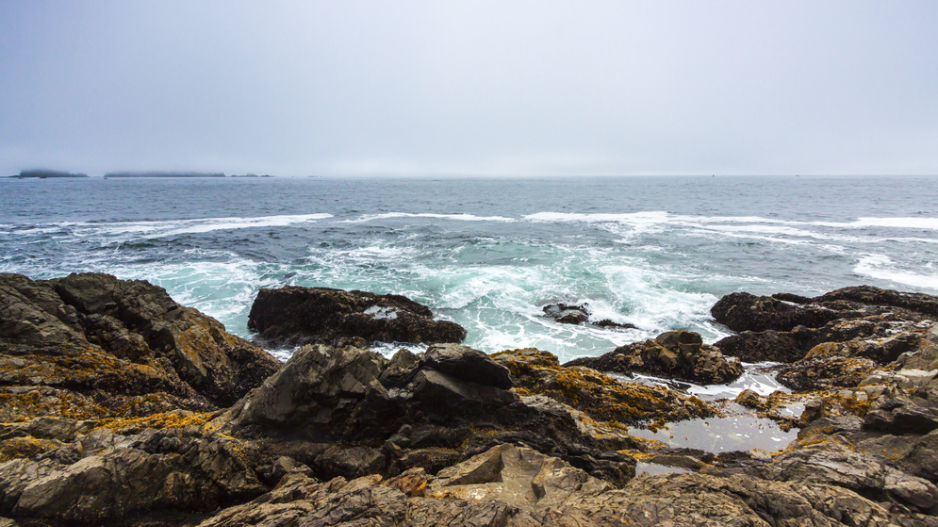Three years after devastating losses caused by climate-change-linked changes in ocean water, British Columbia shellfish farmers are still waiting for signs their industry will recover.
“We don’t know what is changing but we do know that there is a very corrosive ocean coming ashore, and it’s been coming ashore progressively worse and worse for the last five years,” said Rob Saunders, owner of Island Scallops near Qualicum.
Saunders’ business rears scallops and then sells the partially grown mollusks to other shellfish farmers on Vancouver Island. In 2013, the industry lost around $10 million when almost 90% of the scallops being grown for harvest died.
It’s not the first time the industry has had to overcome major challenges. Shellfish farming got its start in B.C. in the 1980s, but in the early 1990s it was hit hard by disease. Farmers worked on developing disease-resistant breeds and by the 2010s were breeding for meat yield and growth.
This latest change is proving harder to adapt to. Shellfish farmers now carefully measure the acidity of the water and practise methods to reduce the acidity levels. The survival rate of the scallops has been improving, Saunders said: 40% of the scallop crop survived in 2014, and he hopes to see a 60% survival rate this year.
In addition to increasing ocean acidification, shellfish growers are also dealing with increased outbreaks of Vibrio parahaemolyticus, a naturally-occuring bacteria that can rise to unsafe levels when water temperatures rise as they did last summer. In August the Canadian Food Inspection Agency issued a food recall warning for oysters harvested from B.C. coastal waters because of the bacteria. However, shellfish growers now say they do many checks and would like to see the entire supply chain tested for the bacteria.
Much is still unknown about how warming temperatures and increased carbon will affect the marine ecosystem. Saunders is alarmed by just how fast the ocean is changing.
“I have to believe that this is a natural cycle that we’re under, because if it’s anything else it’s catastrophic,” he said.
Around 25% of carbon emissions end up in the ocean, according to the U.S. National Oceanic and Atmospheric Administration. An increase in carbon dioxide is making ocean water more acidic in some parts of the ocean. The phenomenon is particularly prevalent in West Coast waters from Alaska to California.
Deeper water tends to be more acidic, and along the West Coast deep water often wells up to the surface, said Chris Harley, a professor of ecology at the University of British Columbia.
Highly acidic water can prevent mollusks from building shells. It can also cause more blooms of toxic algae, which can build up in shellfish and lead to bans on harvesting.
“We really don’t know what the threshold and tipping point is, but we’re already looking at water that’s too corrosive to build shells in in deeper water off our coast,” Harley said.

Chris Harley, professor of ecology at UBC | Chung Chow
Shellfish farmers can lower the acidity level by adding chemicals like sodium hydroxide or calcium hydroxide to the water they’re using to rear scallops or oysters. Leaving water to sit for several hours also lowers the acidity levels, Saunders said. But the young scallops or oysters must eventually be transferred to the ocean to continue growing.
Harley’s research has shown that in water that is even just a bit more acidic, scallops will develop more slowly and fail to thrive.
“When you grow oysters, clams, geoduck, mussels in that water they don’t swim very well, they don’t eat and they have a very high mortality rate,” Saunders said.
The scallops that have survived so far might be good candidates for future breeding, Saunders said. He’s also experimented with growing a local breed called the purple-hinge scallop, but it’s still unclear whether those scallops will have an improved survival rate.
“One of the reasons it’s not well understood on the B.C. coast is that it’s a complicated system and there are lots of things happening at once,” Harley said, adding that more study is needed.
“The water’s become more acidic, but it’s also becoming warmer. Diseases are becoming more prevalent and the interactions between species are changing, so it’s really hard to pin down why all those scallops died [three] years ago.”
@jenstden




